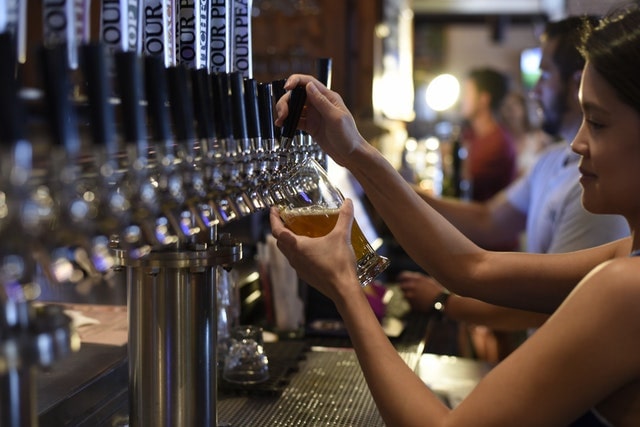
The whole idea of brewing a beer can intimidate even the biggest beer fans. And after years of writing about beer we sometimes get tripped up on the basic steps that go into making your favorite beer.
But as part of American Craft Beer’s ongoing effort to inform, entertain and make you an overnight beer genius, we’ve broken down the brewing process into five easy steps that even a 5-year-old could understand.
Let’s start with the most basic…
Beer consists of four primary ingrediants: grain, hops, yeast, and water…anything else is basically window-dressing.
These four ingredients all play critical roles in what eventually ends up in your beer glass…But the five step Brewing Process is how and why the magic happens…
1) Malting
Malting (think sprouting) is the process in which grain is made ready to become the MAIN INGREDIENT in the brewing process. This step allows for the controlled germination of the grain.
The grain (usually, but not exclusively, barley) is steeped in water, then rested under precise conditions to encourage germination, and finally dried in a kiln and/or a roaster. Germination helps break down stored starch into fermentable sugar.
2) Mashing
Mashing is the process of roasting, milling, and soaking the germinated grains in hot water. Malted grain is crushed and mixed with boiling hot water resulting in a substance that resembles thick soup.

(Not rocket science)
At this temperature, usually around 150 F, enzymes that have been activated during the malting process spring into action. This is what the brewer wants, as these starches are converted into sugars by the grain’s own enzymes. It is these sugars that will be used later by the yeast as a food source so they can produce alcohol and carbon dioxide.
The result is a sugar-containing liquid called wort.
3) Boiling
Then the wort is transferred into another large vessel known as the kettle, where it will boil away for well over an hour. Exactly how long “the boil” takes depends on the beer style.
The boil stage is also typically where the hops are added although some brewers add them earlier or later depending on what they are trying to do. Hops added earlier to the mash are about upping a beer’s flavor profile and its bitterness. Hop additions during the later conditioning stage add to the beer’s aromatics.
4) Fermenting
Once the boil is done, the wort is cooled and transferred into the fermentation vessel and yeast added, which converts sugars into alcohol and carbon dioxide. As the yeast ferments the wort, its sugar content decreases while its alcohol content increases. The more sugars the brewer has allowed to be carried over into the fermentation vessel the higher a beer’s alcohol content.
Ales and lagers are different types of beers, and their main difference is the yeast strain used for brewing. Ales are generally made with the Saccharomyces cerevisiae strains, while lagers typically use Saccharomyces pastorianus which ferment at cooler temperatures.
5) Conditioning
During this stage the brewer is letting the brew mature. The yeast activity slows down and stops, eventually sinking to the bottom of the vessel.
This is the last step, during which beer is stored and left to age around a week to 10 days, is pretty essential because without conditioning your beer would be flat.
So that’s the beer brewing process boiled down to five basic steps.
But if your thirst for beer knowledge has not yet been quenched…There’s also this:
BEER SCHOOL – WHAT’S THE DEAL WITH ABV AND IBU?
WHAT THE HELL IS MALT AND WHAT DOES IT HAVE TO DO WITH MY BEER?
###
(Special thx to BrewDog for their considerable help with our coverage)
 American Craft Beer The Best Craft Beer, Breweries, Bars, Brewpubs, Beer Stores, And Restaurants Serving Serious Beer.
American Craft Beer The Best Craft Beer, Breweries, Bars, Brewpubs, Beer Stores, And Restaurants Serving Serious Beer.
